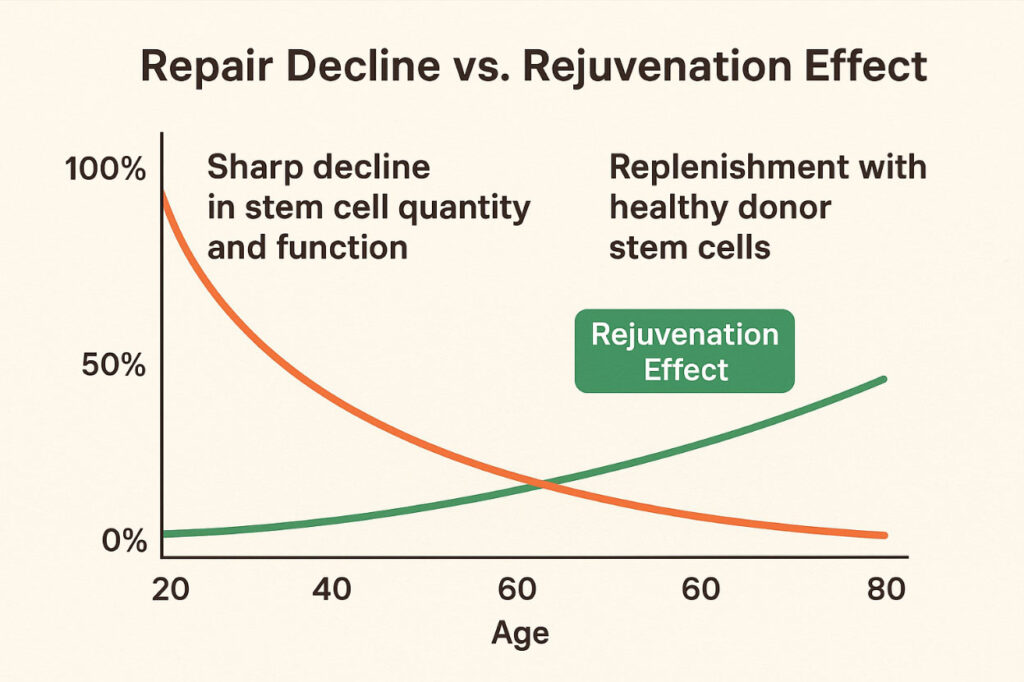Why regenerative and preventive cell therapy becomes scientifically and clinically meaningful?

Here’s a clear, evidence-based rationale why replenishing or boosting stem cells from age 40 onward makes sense:
🌱 1. Sharp Decline in Stem Cell Quantity
By around age 40, your body has already lost more than 50% of its available stem cells compared to youth.
- At age 20: ~2.5 billion stem or stem-like cells (across tissues)
- At age 40: ~1.2 billion
- At age 60: <0.5 billion
This means the natural “repair pool” that maintains organ health, heals injuries, and regenerates tissue is halved or worse.

⚙️ 2. Functional Decline in Regenerative Power
Even the remaining stem cells don’t work as well:
- DNA damage accumulation, shortened telomeres
- Weakened signaling and reduced ability to differentiate into new tissue
- Chronic inflammation (“inflammaging”) further suppresses their activity
So even if some stem cells remain, their effectiveness might drop to 30–40% of youthful capacity.

💪 3. Replenishment Restores the Repair System
Allogeneic (healthy donor) stem cell therapy helps:
- Repopulate depleted stem cell niches (especially bone marrow, adipose, and muscle)
- Rejuvenate the body’s own endogenous stem cells through paracrine signaling (growth factors, cytokines, exosomes)
- Reinstate immune balance and reduce chronic inflammation
This creates a “younger biological environment” for healing and longevity.

❤️ 4. Clinical Benefits Seen in Studies
- Improved vascular regeneration, tissue healing, and energy levels
- Better immune modulation and anti-inflammatory response
- Positive effects on metabolism, skin health, and organ recovery
- Slowed biological aging in measurable biomarkers (e.g., telomere length, epigenetic age)
⏳ 5. Age 40–50: The Optimal Window
At this stage:
- Decline is significant but not irreversible
- Organs are still structurally intact
- Replenishing stem cells can extend the functional “youth phase” of your biological systems
It’s much like recharging your “body’s repair battery” before irreversible degeneration sets in.
